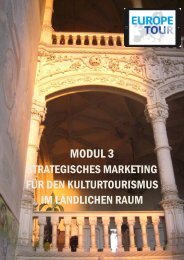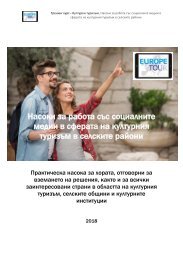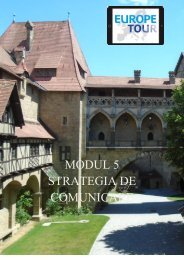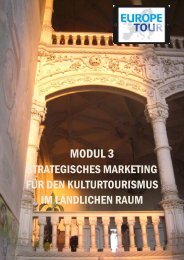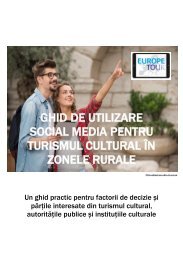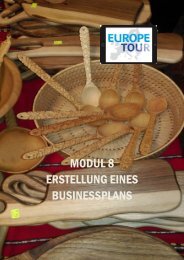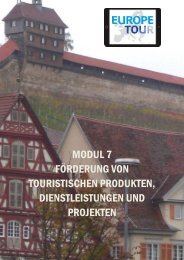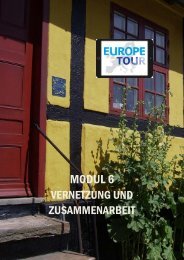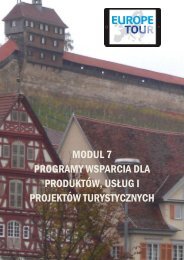M5_Communication_Strategy_v6
You also want an ePaper? Increase the reach of your titles
YUMPU automatically turns print PDFs into web optimized ePapers that Google loves.
CULTURAL TOURISM TRAINING COURSE<br />
MODULE 5 - COMMUNICATION STRATEGY<br />
Defining Target Groups<br />
While public relations are predominantly non-specific towards the outside, advertising has a distinct target<br />
group-specific customer approach. The advertising form and the advertising material must be appropriate<br />
to the target group – a plausible but sometimes difficult task.<br />
Examples:<br />
The advertising message for the target group "young people" is<br />
more likely to be attributed to the attributes "movement, action,<br />
variety, trendy" etc., while the target group "seniors" is rather "quiet,<br />
relaxing". For exclusive offers you might highlight the peculiarities<br />
as well as use an "elevated" language level.<br />
Advertising media and advertising forms<br />
Advertising media should always be done professionally. A professional designer is your best partner in<br />
the development of targeted advertising materials. With her/his support your messages are transformed<br />
and sent to the respective target groups via various media as a combination of sound, text and language.<br />
Depending on your target group, specific requirements will apply to the advertising. Also, they<br />
must be matched in style and form with your overall marketing. Advertising materials include acoustic,<br />
visual, graphic, decorative and promotional products.<br />
<br />
<br />
Exclusive cultural tourism trips should be advertised with four-colour high-gloss brochures.<br />
For low-cost offers, e.g. last minute travel, black and white sheets or handwritten announcements<br />
are an appropriate form of advertising materials. ( Handwriting does need to be readable<br />
and elegant though)<br />
Catalogues and brochures<br />
In tourism, catalogues and brochures are the most widely used advertising media.<br />
Catalogues contain your entire offer. Their main task is to provide comprehensive information and to<br />
stimulate concrete purchasing decisions. They are mainly used as travel brochures at tour operators<br />
and as room catalogues or room lists. Catalogues usually combine general information (landscape,<br />
area, climate, etc.) with a service part (arrival and departure, A-Z) and a sales part (compilation of<br />
services, some with illustrations).<br />
33




